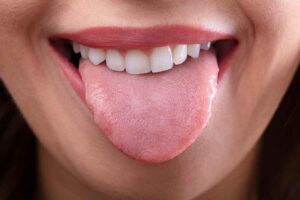Factors That Cause Discoloration of Dental Fillings
- August 21, 2024
- 4:44 am

Dental filling is one of the most commonly performed dental procedures to repair damage caused by cavities or injury.
This procedure involves filling the cavity in a cleaned tooth with special materials, such as amalgam, composite resin, or other substances.
Although dental fillings are designed to be durable, many people may have experienced discoloration of their fillings over time.
The color change in dental fillings is a phenomenon where the color of the dental filling changes from its original color after some time.
These changes can range from slight color changes to more striking alterations, depending on various factors.
Generally, this color change occurs more frequently in fillings that use composite resin materials, which tend to be more sensitive to external factors compared to other filling materials like amalgam.
This article will discuss why dental fillings can change color, the factors that influence this, and how to keep fillings in good condition.
Table of Contents
Factors Causing Color Change in Dental Fillings
1. Filling Material
One of the main factors that influence color change in dental fillings is the type of material used.
Composite resin fillings, made from a mixture of plastic and glass, are more susceptible to discoloration compared to other materials.
This is because resin composites can absorb pigments from the food, drinks, and other products we consume daily.
Meanwhile, amalgam fillings, which consist of a mixture of metals such as silver, mercury, and tin, tend to retain their color longer but can darken over time due to oxidation.
2. Exposure to Coloring Substances
Exposure to substances that contain natural or artificial dyes, such as coffee, tea, red wine, and other strongly pigmented foods, can lead to discoloration of dental fillings.
These substances can seep into the tiny pores of the resin composite filling, causing the filling to change color.
In addition, smoking is also one of the main causes of discoloration in dental fillings because the nicotine and tar in cigarettes can stain both the fillings and the teeth.
3. Poor Tooth Brushing Habits
Incorrect or irregular tooth brushing habits can also accelerate the discoloration of dental fillings.
When teeth and fillings are not cleaned thoroughly, plaque and food debris can accumulate around the fillings, which can cause the fillings to discolor.
In addition, the use of abrasive toothpaste can also cause the surface of fillings to become rough, making it easier for pigments from food and drinks to be absorbed.
4. Time and Age of Fillings
Like many other things, the age of dental fillings also affects color changes.
Old dental fillings usually show signs of wear, including discoloration.
Over time, patches can develop micro-radial cracks or small fissures that can trap pigments, leading to discoloration.
In addition, old fillings may start to separate from the teeth, allowing staining from food and drink residues to enter the gap between the filling and the tooth.
How to Treat Discoloration of Dental Fillings
1. Good Dental Care
One of the best ways to prevent discoloration of dental fillings is to maintain good oral hygiene.
Brushing your teeth twice a day with fluoride toothpaste and using dental floss daily can help remove plaque and food debris that can cause staining.
Using antimicrobial mouthwash can also help reduce the number of bacteria in the mouth that can produce acid and cause discoloration.
2. Avoid Foods and Drinks with Strong Pigments
Reducing the consumption of foods and drinks with strong pigments, such as coffee, tea, red wine, and brightly colored foods, can help prevent discoloration of dental fillings.
If you consume pigmented drinks, try using a straw so that the drink doesn't come into direct contact with your teeth and fillings.
In addition, rinsing your mouth with water after consuming pigmented food or drinks can help reduce the risk of staining.
3. Regular Visits to the Dentist
Regular visits to the dentist at least twice a year are very important to monitor the condition of your dental fillings.
The dentist can clean fillings that have changed color or recommend additional treatment if necessary.
If the discoloration of the filling is severe enough, the dentist may recommend replacing it with a new one.
For those of you who are in Bali – Denpasar and have complaints about your teeth or mouth, consult immediately at Omnident Bali – Denpasar.
We are dedicated to being the clinic that provides the best dental and oral health services in Bali at affordable prices.
We continuously strive to provide services that will meet your expectations for the desired results.
In addition, every treatment related to aesthetics or cosmetics will be carried out with the utmost care because we are a clinic that not only provides care but also strives to deliver the most aesthetically pleasing results possible.
Artikel Terbaru

Cara Efektif Hilangkan Kotoran pada Lidah

Cara Efektif Jaga Kesehatan Mulut Bayi

Ini Manfaat Cabut Gigi untuk Kesehatan Mulut

Bentuk Gigi Tidak Rapih? Ini Solusinya

Mengapa Bau Mulut Sering Terjadi di Pagi Hari?

Mengapa Makan Permen Merusak Gigi
Our Address
Nusa Indah St. No. 80, Sumerta, East Denpasar District, Denpasar City, Bali 80235
Opening Hour:
Monday - Saturday
09.00 am - 01.00 pm & 05.00 pm - 09.00 pm
Copyright © 2024 Omnident Bali Dental Clinic | Developed by Gleamore.id
